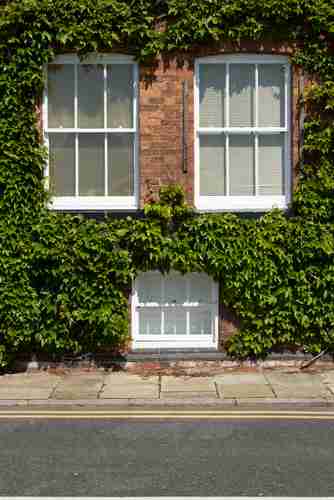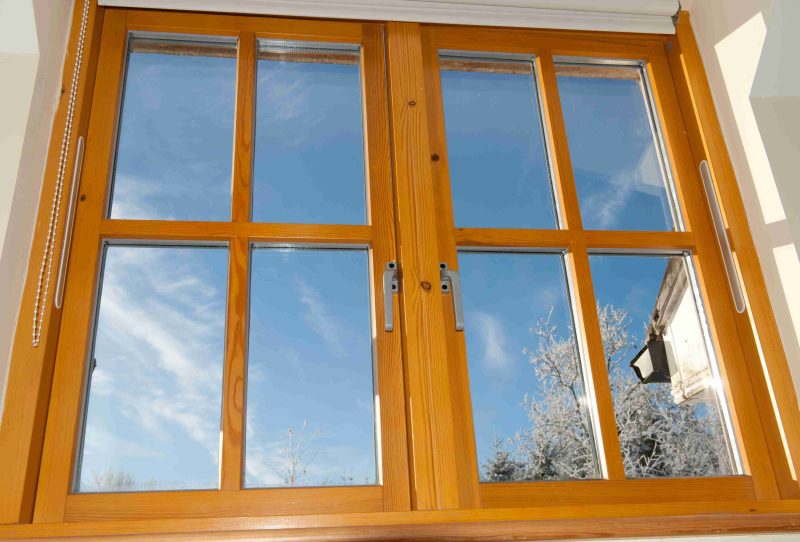
It may not be immediately obvious, but the material from which your window frames are made is hugely important to the overall look and energy efficiency of your home. Going for timber or uPVC windows can mean differences in price, performance and more. Here we will look at some key considerations to keep in mind.
Timber or UPVC Windows – What’s Best?
Researching the right windows for your home is incredibly important and you’ve come to the right place if you want to get an overview of the key differences between timber and uPVC.
There are some basic facts that many people are missing — from the misconception that you can only get double glazing if you install uPVC windows, through to the fallacy about timber frame windows rotting quicker than uPVC window degradation.
In general, if you’re buying brand new windows, both uPVC and timber windows will give excellent energy efficiency and will look smart too. Year on year, window performance improves consistently.
So the windows you’ll be replacing will be nothing compared to the ones you’re about to fit, even if they’ve shown no signs of wear across the period you’ve owned them. There’s just no competition.
Nonetheless, the differences between the two most popular window frame materials — timber and uPVC — are worth knowing about before you make your final choice. If your property currently has timber windows, it might not always be the most suitable choice to replace with timber and the same is true for uPVC.
We’ll talk you through the pros and cons of both timber and uPVC sash windows and explain why the best material to use for one property might not be appropriate for another.
Timber vs uPVC Windows — What’s the Difference in Looks?
The great thing about modern window frames is the abundance of choice of finishes you have.
Timber windows will always look great installed in older or period properties, as the smooth plastic finish of standard uPVC windows can look out of place — especially if the house next door has period-style wooden window frames.
However, there are uPVC windows with a woodgrain effect that can replicate the look of timber windows. Our uPVC windows can be ordered with a woodgrain effect.
For a traditional sliding sash window, however, there’s no beating timber. We would always recommend replacing like for like in terms of material, so even though there are excellent examples of uPVC woodgrain effect window frames, your home will look just that little bit better with the real thing.
Sashes will also be thinner and more natural-looking when you buy wooden frames. uPVC sash windows can replicate the traditional look, but not perfectly.
You can read about how uPVC sash windows work in our handy guide.
Are uPVC Windows More Energy Efficient Than Timber Windows?
You’d be forgiven for thinking that uPVC held the upper hand when it comes to energy efficiency. They are — after all — the more modern building material.
However, timber is a naturally insulating material and will keep out the cold during the winter extremely well.
Older timber windows will likely have just single glazing, so it might be that this misconception comes from people recognising how cold it is with timber windows with only single glazing.
Double glazed windows will improve the thermal insulation of your home, regardless of the frame material.
uPVC windows are engineered and contain multiple chambers within the frame to stop heat transfer.
As long as you check the certifications of the windows you’re buying — all of our windows are ‘A’-rated for energy efficiency — there should be no difference in this performance between uPVC and timber.
As long as the windows are fitted to a high standard and the frames are properly sealed to the walls of your property — and the glazing units within — you should find no discernable difference between modern uPVC and timber framed windows.
The energy efficiency of a window has much more to do with the specification of the glazing unit inside the frame than the frame itself. Well-designed windows will have similar ratings for thermal efficiency regardless of frame material.
Is There a Difference between Timber and uPVC Windows When It Comes to Maintenance?
We’ve previously talked you through how to maintain aluminium windows and doors, and have shown you just how easy they are to keep in great condition for many years.
But what about uPVC and timber? Is there a difference between them in terms of good upkeep practice?
There is a slight difference. uPVC is a smooth material that can be wiped clean. Timber is a little more complicated.
That’s not to say that timber windows are hard to maintain — far from it! But more care needs to be taken when thinking about how to clean and repair wooden frames as opposed to their plastic counterparts.
Timber windows may need sanding and re-painted — we would recommend looking at getting this done every five to eight years to keep your timber windows looking as good as new throughout their life.
uPVC windows, however, do not need this kind of work. As long as the seals are kept clear and clean, uPVC can last for a very long time indeed.
The one drawback in terms of maintenance when it comes to uPVC versus timber windows is the repairability of a timber frame. If you get significant damage to a uPVC window frame, you’re probably going to have to replace it.
If you’ve got a wooden frame around your window that gets damaged, the likelihood for a repair rather than a replacement is far higher.
Which Window Gives You More Finish Options, uPVC or Timber?
As previously mentioned, there is an extensive range of finishes — colours, textures, etc. — to choose from with both frame types.
We can supply and fit windows in all sorts of styles and we can even match your new windows to your old or existing ones.
This is especially important if you are replacing just some of the windows in your home, rather than all of them.
This promise is not limited to one frame material. Both timber and uPVC are versatile propositions and we ensure we always get our finishes right.
Glazing styles and types are also customisable and you can have the complete range of frosted or patterned glasses in both timber and uPVC windows.
Neither one or the other wins out when it comes to the number of finish options you have.
Which Type of Window Costs Less, Timber or uPVC?
For many, it comes down to cost. Which window presents the best value for money?
Well, it’s not as simple as saying “uPVC windows are generally cheaper,” even though this statement is technically true.
Good value is the important metric here and it makes no sense to go with uPVC if your property is crying out for timber.
In particular, timber sash windows are seen as the best choice for traditional homes. On anything but a new build, a timber window can likely add value to a property.
If you have a period home or a home in a conservation area, replacing timber windows with lower-cost uPVC windows can devalue your property significantly.
So you should always consider the bigger picture — a small saving now could mean a significant loss later on down the line.
With the easy maintenance and charming looks of timber windows, it can pay to spend a little bit more if your property suits them.
If you’re considering replacing your windows any time soon, talk to us about our range of uPVC and timber options. We can help guide you on your home renovation to ensure you choose the right windows for your property type.

